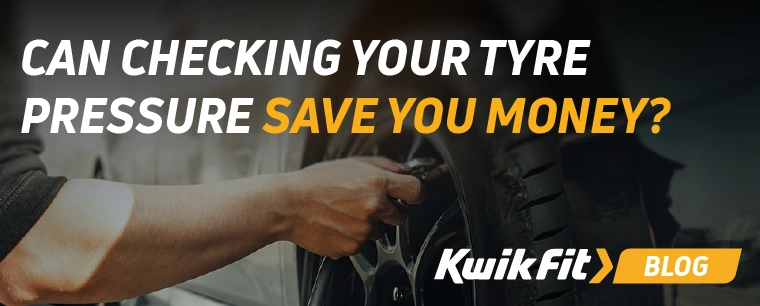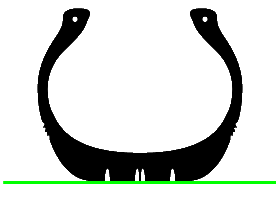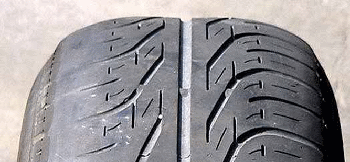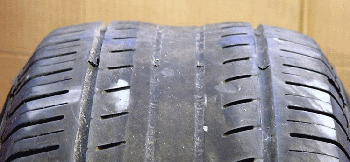How Regularly Checking Your Tyre Pressure Saves You Money
Jessica Bird | Sunday 19th October 2025 10:00am

How often do you check your tyre pressure? If the answer is less than once a month, then this blog might be quite the eye-opener for you.
It can be easy to neglect routine tyre maintenance, especially if your tyres appear to be in working order. However, on some occasions, you may not notice any issues until a problem occurs.
And these are problems that you should really aim to avoid. Under-inflated tyres that fall under the recommended tyre pressure pose a safety risk to you and your passengers, due to the increased likelihood of tyre failure. You can reduce the potential risk, as well as save money, simply by making sure your tyres are correctly inflated with a tyre pressure check. After all, having the correct tyre pressure matters.
Before we get into the specifics of how checking your tyre pressure saves you money, letís look at under and over inflation Ė as well as what the results of each are.
The impact of improper tyre inflation
Under-inflated tyres
Tyres generally lose up to two pounds of air per month. This leads to your tyres quickly becoming under-inflated if you donít keep an eye on them, making it crucial to perform a tyre pressure check weekly or before a long journey.
Under-inflated tyres have uneven contact with the road and, when left underinflated, your tyres will exhibit excessive wear on the inside and outside edges of the tread.
Not only does under-inflation mean that your tyres will wear out quicker (leaving you to replace them sooner than if they had the correct tyre pressure) but youíll also experience increased rolling resistance with the road.
Under-inflated tyres can also affect your steering, depending on the location of the underinflated tyre. If itís at the front of your vehicle, youíre likely to experience understeering. Under-inflated rear tyres, on the other hand, will increase oversteering.
In the event that all your tyres are under-inflated, your steering will be sluggish in general. Not to mention that all of your tyres being underinflated increases the risk of them blowing out - it becomes four times as likely, in fact. If that isnít enough to convince you to get your tyres pumped up, we donít know what is!
Over-inflated tyres
When it comes to over-inflated tyres, the risks are typically overlooked. Many drivers will say: ďSurely over-inflated tyres canít be that bad? The tyres will deflate to the correct tyre pressure eventually.Ē
This is a dangerous school of thought, as over inflating your tyres could be just as damaging and costly, often leading to premature tyre replacement. Over-inflated tyres have less contact with the road, meaning that you have less traction and will experience longer and less efficient braking distances. This poses a dangerous threat that can easily go unidentified without a routine tyre pressure check.
Because the centre of the tyre is making all the contact with the road, rather than distributing the contact across the entire surface of the tyre, your tyres wear heavily and unevenly across the central part of the tyre. This will mean that your tyres wonít last as long, and youíll be resigned to buying replacement tyres much sooner than you expect.
How proper tyre pressure saves you money
So, to get to the point of this blog, keeping your tyres at the correct pressure isnít just about ticking a box on your car maintenance checklist Ė it can directly save you money in the long run. As weíve mentioned, when tyres are under (or over) inflated, they donít wear evenly. This excessive and uneven wear means youíll need to replace them sooner than necessary, which can quickly become costly, especially if it happens across all four wheels. The important thing to note here is that this excessive wear isnít something that just decreases the lifespan of the tyres by a few months. In extreme cases, this can result in you having to replace the tyres every year Ė which very quickly adds up for your wallet!
Incorrect tyre pressure also increases rolling resistance Ė which is the amount of effort needed for your car to move along the road. With higher resistance, your engine has to burn more fuel, and those extra litres add up at the pump over time.
And if those reasons werenít enough, itís not only your tyres that take the hit from improper inflation. Driving on poorly inflated tyres puts extra strain on your suspension and steering components, which leads to faster wear and potentially expensive repairs.
Perhaps most concerningly, underperforming tyres donít grip the road as effectively, which seriously increases your risk of collisions. Beyond the obvious safety concerns, accidents can completely total your car, result in hefty repair bills, and increased insurance premiums. So, simply keeping an eye on tyre pressure is a really easy way to save money, extend your carís life, and drive more safely.
But how do you do so?
How to spot an under-inflated or over-inflated tyre
Being able to spot the signs of under or over-inflation is simple once you know what youíre looking for. Tyres that have been incorrectly inflated will show increased wear at the points at which the tyre makes contact with the road, whether thatís the centre of the tyre or the inner and outer edges of the tread. A properly inflated tyre will wear evenly across the width of the tread.

Correct Inflation

Under inflation

Over Inflation

An under inflated tyre showing excessive wear along the inner and outer edges of the tyre

An over inflated tyre showing excessive wear across the middle section of the tyre
UK Tyre Law
In the UK, the legal minimum limit for tyre tread is 1.6mm. This tread depth must be consistent across the central three quarters, across the width of the tyre, and all the way around. So, even if the tread down the middle of the tyre meets this requirement, if your tyres show signs of excessive and irregular wear, you could be fined or penalised.
How to check your tyre pressure
Before checking your tyre pressure, youíll need to know what the correct tyre pressure is for your vehicle. Your vehicle handbook will list the recommended tyre pressures for your car, or it may be printed in the sill of the driverís door. Alternatively, you can use our tyre pressure calculator tool to work out the correct tyre pressure for your vehicle.
Most petrol station forecourts offer an air pump, either free of charge or for a small fee. If paying, we recommend removing your tyre valve caps before inserting your money as you will be given limited time to use the machine. Set the compressed air machine to the correct tyre pressure, and then place the hose end over the tyre valve.
The machine will tell you what the current pressure of the tyre is and will inflate to the desired tyre pressure. Once complete, the machine will beep and you can then release the hose and move on to the next tyre. Remember to reset the desired pressure on the machine if your front and rear recommended tyre pressures are different.
Check your tyre pressure at Kwik Fit
Here at Kwik Fit, driver safety is our primary concern. We offer a free tyre checking service, ideal if youíre concerned about irregular tyre wear, are unsure of how to check your tyre pressure, or simply want us to check your tyre pressures for you.
You can book a free pressure check online or visit your nearest Kwik Fit centre today.
Any facts, figures and prices shown in our blog articles are correct at time of publication.
Featured Articles
Is it Illegal to Drive With One Headlight?
Saturday 19th July 2025
Wondering if itís illegal to drive with one headlight? Learn about the safety risks and penalties of illegal blown bulbs and why you should fix them promptly.
Air Con in EVs & Hybrids: Experts Answer Your Questions
Monday 30th June 2025
Does air con drain EV batteries? Can you use the air con while charging an electric car? Find out the answers to these questions & more from Kwik Fitís experts.
Why Is Your Car Making a Noise? Fixes & Tips
Friday 13th June 2025
When your car starts making unexpected noises, it can certainly be quite disconcerting; it may be nothing to worry about, but hereís what you need to know.









